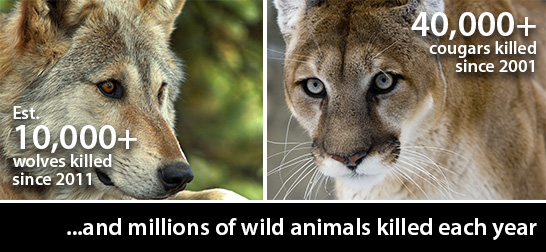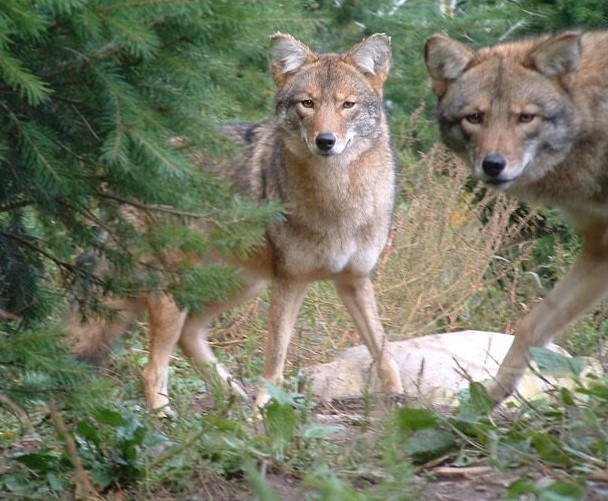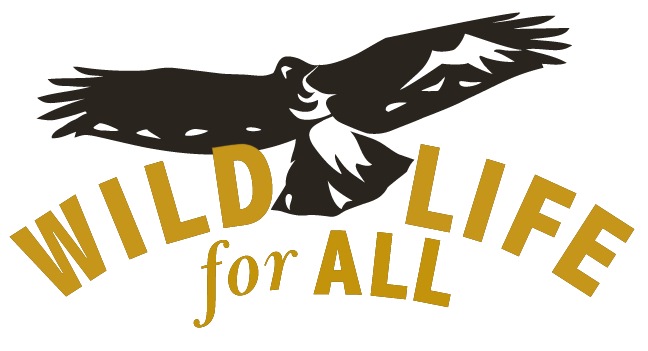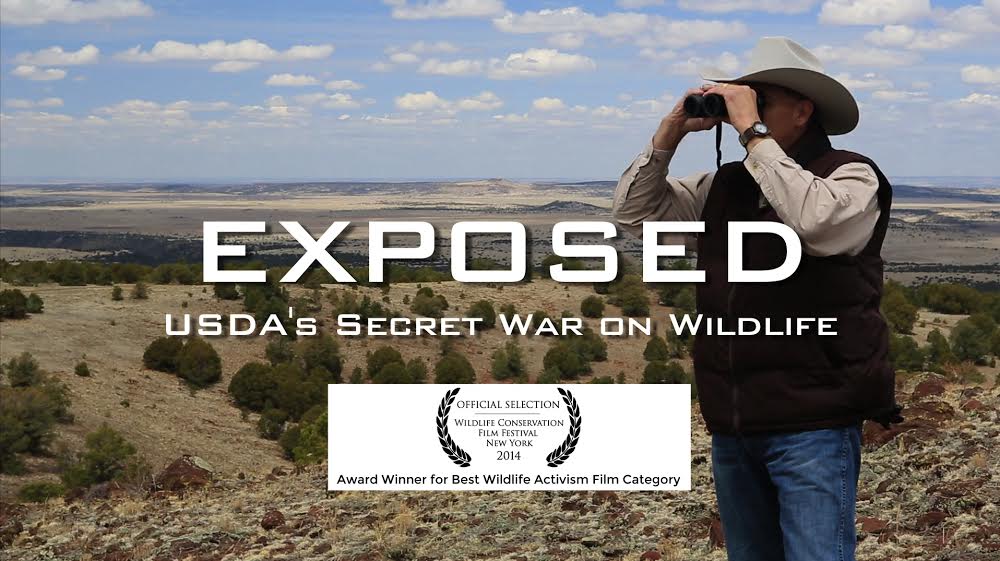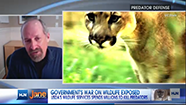The Killing Agencies: Unmasking the Myth of Wildlife "Management"
How our wildlife is managed in America is a travesty.
In reality wildlife management in America means killing millions of wild animals each year with taxpayer money. The state and federal agencies in charge of managing wildlife use methods that are not only cruel, indiscriminate, and ineffective, they also endanger humans and kill countless pets. We're working to reform these agencies and stop this barbaric and scientifically unsound war against nature. What we need is nothing less than a revolution for wildlife.
Mistaken Beliefs We Are Working to Debunk
Here are some key mistaken beliefs we are working to debunk:
- wildlife needs to be managed
- we need to kill predators to control their populations
- killing predators doesn’t have a dramatic negative effect on ecosystems
- animal cruelty is OK
- hunters are conservationists
- minority interests controlling the majority’s wildlife is acceptable
Read more about these misconceptions below, including common myths vs. facts and key scientific evidence.
Help us transform the culture for wildlife by making a tax-deductible donation today.The Term "Wildlife Management" = An Oxymoron
Wildlife management is a loaded term for a number of reasons. It is an oxymoron, as, by nature, wild animals cannot really be "managed," any more than weather can be managed, or any other "act of god." Wildlife can be killed, and that says a lot about the term and what it really means.
Here’s our definition of wildlife management: Wildlife agencies manage people who kill animals (mostly for sport). They do this by licensing hunters and trappers and by limiting how, when, where, which, and how many wild animals can legally be killed.
Most people think wildlife management is a science based on principles of wildlife conservation, and that it is practiced for the benefit of wildlife species.
We disagree and feel people have been mislead about the role of wildlife management agencies by media, by politicians, by sportsmen’s organizations, ranching associations, wildlife management agencies and even some conservation organizations. Images of Ranger Rick and Smokey the Bear are a smokescreen for, and in conflict with, tools of the management trade, such as aerial gunning of wolves and coyotes, automatic weapons, gps collars, trail cameras, electronic call boxes, foot hold traps, strangling snares, instant kill traps, and high tech carbon fiber crossbows.
Myth vs. Fact
It’s no wonder there are so many misconceptions, when you consider the following wiildlife management myths and facts:
MYTH: Wildlife management agencies work for the public, and for the well-being and benefit of wildlife species conservation.
FACT: Wildlife management is a business. Managers work to please the constituency that pays their salaries. Wildlife departments are funded almost exclusively through the sale of hunting and trapping tags and licenses and from the sale of guns and ammunition. Hunters and trappers are in the field to kill animals.
* * * * * * *
MYTH: Wildlife agencies use the best-available science to make policies.
FACT: Agencies use the science that supports their policies, which are geared to maximize hunter and trapper success in killing their prey. Virtually every wildlife management agency promotes and provides seasons for killing of predator species which they view as competition to hunters. Current science does not support the need for killing predators. In fact, it shows that killing predators increases conflicts, such as predation on livestock and pets. Killing of predators also fractures territories and creates what scientists refer to as social disruption/chaos. In addition, it weakens prey species because hunters prefer the large trophy animals while predators select the very young or infirm.
* * * * * * *
MYTH: Wildlife commissions supervise management agencies, provide oversight. Decisions are made for the public with their input.
FACT: Most commissions are appointed by politicians, such as governors and congressional committees. Special interests influence politicians. Hunting, firearm and agriculture are powerful interests that influence politicians and their appointments. Every state wildlife commission is top heavy with hunters, ranchers, and people from industries that support those interests. Conservation interests are rarely represented, and if so it’s a token member.
* * * * * * *
What We're Working to Expose & Change
- The Management Misnomer: Failure to acknowledge that wolves and other predators are vital top-down trophic regulators of natural systems. They do not need to be “managed,” because their numbers are regulated by social structure, availability of prey, weather and spacial requirements.
- The Intentional Anti-Science Mentality: The public thinks management decisions made by federal and state wildlife agencies are all based on sound science and made for the benefit of wildlife. The opposite is true.
- Social Chaos & Ecosystem Damage: The fact that the fracturing of family units creates social chaos for species, which also results in damage to ecosystems.
- Who’s in Charge: Big hunting and ranching interests control wildlife policy. A special interest monopoly pulls the strings, in particular the National Rifle Association, Safari Club International, and Rocky Mountain Elk Foundation, National Cattlemen’s Association, and The American Sheep Industry Association.
- Hunters Are a Tiny Minority, Yet Control Policy & Law: According to a U.S. Fish & Wildlife Service census, hunters make up a mere 5-6% of the U.S. population. Yet they have a stranglehold on wildlife policies and laws.
- The Betrayal of Public Trust: The fundamental principle of the public trust and our starting premise is that just, democratic governments must preserve environmental components as assets held in trust for current and future generations.
- Conservation vs. Profit: How the money raised from killing wildlife doesn’t go toward conservation, a claim that hunters often make. And there is a stark difference between conservation biologists, who work to conserve wildlife, and the wildlife management biologists used by the agencies. The latter manage wildlife for profit and political gain.
- Misuse of Tax Dollars, Wildlife Services program i.e. “Murder Incorporated”: Tax dollars are used to provide game for hunters and to subsidize ranchers. The America public pays for wildlife management agencies to kill and scapegoat millions of animals each year. They say they are doing it to: (1) preserve prey populations like elk and deer, yet humans, not predators, are the major threat; and (2) protect livestock from predators, when ranchers should be doing this themselves using nonlethal control methods.
- Misuse of Public Lands: Many areas, like public lands in the West, are simply inappropriate for livestock. Wildlife and public interest should have priority on public lands.
- False Alarm re Pubic Safely: How alarming the public about safety concerns from predators is a red herring. The methods used to control predators—poisons, traps and snares—are the real public safety concern.
- Cruelty & Silence: Wildlife agencies have remained appallingly silent regarding the torture of animals, killing contests, etc. Example: Hunters posing with animals in traps while they’re still alive.
- The Horror of Trophy Hunting (The Thrill of Killing for Killing’s Sake): In August 2015 there was a worldwide outcry about the killing of Cecil the Lion in Africa by a trophy hunting dentist from Minnesota. Yet people have been relatively silent regarding the slaughter of mountain lions in America—over 40,000 have been killed since 2001—and all killing has been legally sanctioned by state wildlife management agencies. Other predators are being killed in record numbers, too.
- A Precedent for Change: There's a precedent for not killing predators. In fact, there are places where they are treated admirably. Over 80 countries and eight U.S. states have banned or severely restricted trapping. California hasn’t hunted mountain lions in 40 years and Costa Rica banned hunting completely. It’s time the United States followed suit. What we need is nothing less than a revolution for wildlife.
The Scientific Evidence
Below you will find a list-in-progress of essays, articles and published peer-reviewed papers by well-known biologists/ecologists, activists and philosophers. They debunk the widely held belief that wildlife management is a science based on conservation of wildlife and wild lands, and that it is practiced for the benefit of wildlife species.
Research Articles
- The ecology of human-caused mortality for a protected large carnivore -
John F. Benson, Kyle D. Dougherty, Paul Beier and Justin A. Dellinger. Proceedings of the National Academy of Sciences (PNAS), Mar. 20, 2023 - The Elephant in the room: What can we learn from California regarding the use of sport hunting of pumas (Puma concolor) as a management tool? - John W. Laundré, Christopher Papouchis. PLOS ONE, Feb. 13, 2020
- The elephant (head) in the room: A critical look at trophy hunting - Chelsea Batavia, Michael Paul Nelson, Chris T. Darimont, Paul C. Paquet, William J. Ripple, Arian D. Wallach. Wiley Conservation Letters | Society for Conservation Biology, Apr. 25, 2018
- Hallmarks of science missing from North American wildlife management - Kyle A. Artelle, John D. Reynolds, Adrian Treves, Jessica C. Walsh, Paul C. Paquet... Science Advances, Mar. 7, 2018
- Killing wolves to prevent predation on livestock may protect one farm but harm neighbors - Francisco J. Santiago-Avila, Ari M. Cornman, Adrian Treves. PLOS ONE, Jan. 10, 2018
- Once I found out: Awareness of and attitudes toward coyote hunting policies in Massachusetts - Jennifer L. Jackman & Jonathan G. Way. Human Dimensions of Wildlife, DOI: 10.1080/10871209.2017.1397824. Nov. 14, 2017
- Values, trust, and cultural backlash in conservation governance: The case of wildlife management in the United States - Michael J. Manfredo, Tara L. Teel, Leeann Sullivan, Alia M. Dietsch. Biological Conservation, Sept. 7, 2017
- Stewardship of wildlife in the U.S.: Conflicting or Compatible? - Jeremy T. Bruskotter, John A. Vucetich and Michael Paul Nelson. The Wildlife Profesional, July 2017
- Caring, killing, euphemism and George Orwell: How language choice undercuts our mission - David Johns, Dominick A. DellaSala. Biological Conservation, March 2017
- Hunting as a management tool? Cougar-human conflict is positively related to trophy hunting - Teichman, Kristine J; Cristescu, Bogdan; Darimont, Chris T. University of British Columbia, Oct. 11, 2016
- Implications of harvest on the boundaries of protected areas for large carnivore viewing opportunities - Borg et al, PLOS|one, April 28, 2016
- Predator control should not be a shot in the dark - Treves, A., Krofel, M., McManus, J. Frontiers in Ecology and the Environment 14: 380-388, 2016
- Blood does not buy goodwill: Allowing culling increases poaching of a large carnivore - Chapron G, Treves A. Proceedings of the Royal Society B 283: 20152939, 2016 | PDF version
- Killing for fund(s): The centerpiece of agency interactions with wildlife - Laura Nirenberg, Trevor Desnae, A. Anne Benaroya. Center for Wildlife Ethics, 2016
- Compassion as a Practical and Evolved Ethic for Conservation - Daniel Ramp, Marc Bekoff. BioScience, Volume 65, Issue 3, March 2015 | PDF version
- Predators and the public trust - Adrian Treves and others. Biological Reviews 000–000, 2015
- Effects of wolf mortality on livestock depredations - Robert B. Wielgus, Kaylie A. Peebles. PLOS ONE, Dec. 3, 2014
- Effects of Remedial Sport Hunting on Cougar Complaints and Livestock Depredations - Kaylie A. Peebles, Robert B. Wielgus, Benjamin T. Maletzke, Mark E. Swanson. PLOS ONE, Nov. 19, 2013
- A Conservation Institution for the 21st Century: Implications for State Wildlife Agencies - Jacobson et al. Journal of Wildlife Management, 2010
Special Feature: "Lethal Control of Predators" in Journal of Mammology
Scientists released new data in 2017 supporting a paradigm shift from lethal control of predators to coexistence via nonlethal deterrents. Read press release. Their findings were published in a special feature called "Lethal Control of Predators" in the Journal of Mammology and included the following six papers:
- Carnivore conservation: shifting the paradigm from control to coexistence - Bradley J. Bergstrom, Journal of Mammology, Feb. 2017
- Attitudes toward predator control in the United States: 1995 and 2014
Kristina Slagle; Jeremy T. Bruskotter; Ajay S. Singh; Robert H. Schmidt, Journal of Mammology, Feb. 2017 - Gray wolf mortality patterns in Wisconsin from 1979 to 2012 - Adrian Treves; Julia A. Langenberg; José V. López-Bao; Mark F. Rabenhorst, Journal of Mammology, Feb. 2017
- Adaptive use of nonlethal strategies for minimizing wolf–sheep conflict in Idaho - Suzanne A. Stone; Stewart W. Breck; Jesse Timberlake; Peter M. Haswell; Fernando Najera ..., Journal of Mammology, Feb. 2017
- Cattle mortality on a predator-friendly station in central Australia - Arian D. Wallach; Daniel Ramp; Adam J. O’Neill, Journal of Mammology, Feb. 2017
- Evaluating the principles of wildlife conservation: a case study of wolf (Canis lupus) hunting in Michigan, United States - John A. Vucetich; Jeremy T. Bruskotter; Michael Paul Nelson; Rolf O. Peterson; Joseph K. Bump, Journal of Mammology, Feb. 2017
Featured E-Book: "Coywolf"
In March 2021, biologist Jon Way, Ph.D., whose life's work has been studying the eastern coyote (aka "coywolf), self-published an e-book to share his wealth of research and knowledge as widely as possible without conventional support. It documents harrowing political supression of his groundbreaking research, which wildlife agencies and academic institutions deem a threat. Called "Coywolf: Eastern Coyote Genetics, Ecology, Management, and Politics," the book is available for free online.
Read intro by author | Download e-book
Here's what our executive director, Brooks Fahy, says about Jon Way's important work, which makes a very strong case for the dire need to reform wildlife agencies:
“For years wildlife managers have abused the public trust by catering to hunters and people with an anti-carnivore mindset in their management regimes. Science and predators have been devalued as a result of this ‘rigged system.’ It is wonderful to see Jon Way’s new book, Coywolf, that is abundantly illustrated and describes the science behind the ecology and genetics of eastern coyotes...Jon also takes on these agencies by detailing the hypocrisy, obstruction, and discrimination that he has faced as a biologist studying these animals. With Jon’s lead, it is due time for more scientists to come forward with their own abuses in the hope to reform wildlife agencies to the respected public institutions that they should be. Reading Coywolf is a must to help us move in that direction.”
In the News
- Why trophy hunting is on the wrong side of history and evolution - The Hill, Feb. 10, 2021
- Evidence does not support hunting as a way to control cougars: Study - OPB.org, Feb. 24, 2020
- Study shows hunting cougars increases conflicts with humans, doesn't protect livestock - Predator Defense press release, Feb. 18, 2020
- Is Wildlife Conservation Policy Based in Science? - American Scientist, Vol. 107. No. 1, Jan./Feb. 2019
- Trophy Hunting: Confronting the Elephant (Head) in the Room | Trophy hunting is an immoral and inappropriate conservation practice - Marc Bekoff. Psychology Today, May 13, 2018
- Compassionate conservation meets conservation psychology - Marc Bekoff. Psychology Today, May 2, 2018
- State wildlife management agencies in crisis - Andy Kerr. Public Lands Blog #90, Mar. 30, 2018
- Opinion: Political populations plague wildlife management - Vancouver Sun, Feb. 4, 2018
- The undeniable value of wolves, bears, lions and coyotes in battling disease - Mountain Journal, Dec. 11, 2017
- Study finds populist ‘backlash’ rising against wildlife agencies - The Wildlife Society, Dec. 7, 2017
- New Paper, “Once I Found Out,” shows the general public’s distaste for carnivore hunting - post by Eastern Coyote/Coywolf Research, Nov. 16, 2017
- The case for mass slaughter of predators just got weaker - National Geographic, Sept. 1, 2016
- How hunting still rules our wildife agencies: State fish and game departments need to change their hook-and-bullet mentality - by Richard Conniff, TakePart.com, March 18, 2016
- Hunting wolves near Denali, Yellowstone cuts wolf sightings in half - Science Daily, April 28, 2016 | Read full research article
- Killing wolves to protect livestock doesn’t work in long run, WSU study says - Seattle Times, Dec. 23, 2014
- Why state fish & game agencies can't manage predators - article by George Wuerthner, posted on New West Community Blogs, April 17, 2009
